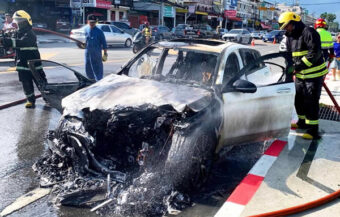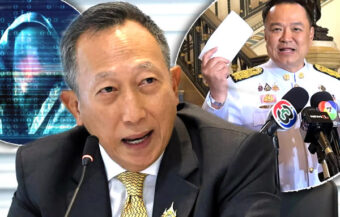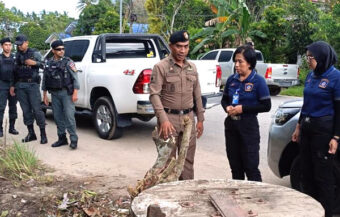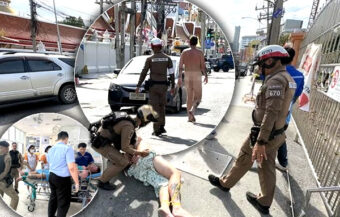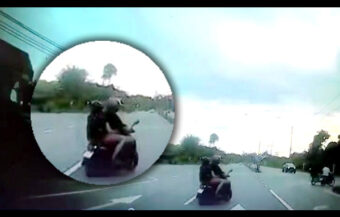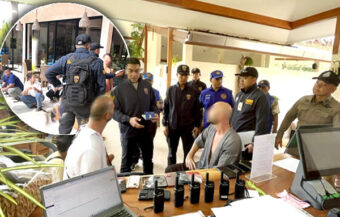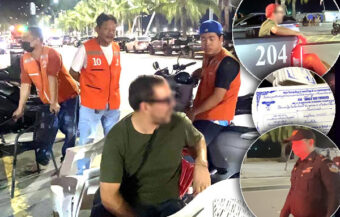Bangkok Governor Chadchart Sittipunt unveils AI-powered smart traffic lights at 72 intersections, cutting delays by 10-41%. The system uses cameras and real-time data to improve traffic flow to reduce emissions. Plans to expand from 72 to 200 intersections in 2026.
Bangkok’s popular Governor, Chadchart Sittipunt, on Wednesday, announced the success of an innovative solution to the city’s notorious traffic congestion. The city has installed smart traffic lights at 72 major intersections to improve traffic flow in one of the world’s most gridlocked capitals. The new system combines cameras with artificial intelligence to make real-time decisions and dynamically adjust signal timing. As a result, the traffic lights are more responsive and flexible, significantly enhancing vehicle movement through busy intersections. The system officially began operation in March this year, and early results are promising — delays have been reduced by 10% to 41%, demonstrating clear improvements in traffic flow.
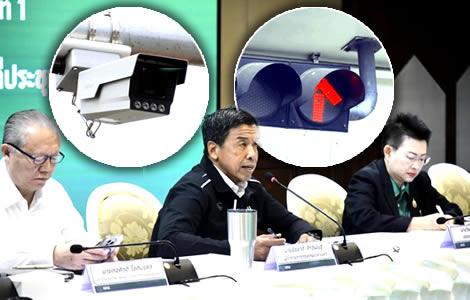
Bangkok’s new smart traffic light system has significantly improved traffic flow at 72 major intersections. Delays have been cut by 10–41% compared to older fixed-time models, according to a city report shared on June 12.
The announcement was made during the 6/2025 meeting of Bangkok agency heads, chaired by Governor Chadchart Sittipunt. The meeting took place at the Rattanakosin Room, City Hall, in Phra Nakhon district.
Senior city officials, department heads and relevant stakeholders attended the session. The smart traffic light project marks a major shift in how Bangkok manages its road congestion. In the past, most of the city’s 561 traffic signals operated on rigid, timed cycles.
Many of Bangkok’s traffic signals were manually adjusted and inefficient during rush hours before smart system
Many required manual adjustments from traffic police, especially during rush hours. These systems often failed to respond efficiently to changing traffic volumes. By contrast, the new adaptive system uses high-resolution cameras and artificial intelligence to monitor real-time conditions.
Image-processing technology counts vehicles in each direction. AI software then adjusts the green light duration based on current traffic volume. For example, if one lane has more cars than another, the system gives it extra green time.
If there are no vehicles approaching, the system cuts the signal early to avoid unnecessary waiting. Moreover, it can detect traffic buildup by measuring intersection delays and will respond accordingly to reduce bottlenecks.
The system is currently active on key roads where traffic congestion is common. These include Rama IX Road, Din Daeng Road, Phaya Thai Road, Sukhumvit Road, Phloen Chit Road, Rama I Road, Rama IV Road, Sathorn Road, Silom Road, Surawong Road, Si Phraya Road and Phahon Yothin Road.
According to the Bangkok Metropolitan Administration (BMA), all 72 intersections were fully upgraded by March 2025. The smart signals have been operating citywide since then.
Off-peak traffic delays dropped 15 per cent with the added benefits of reduced emissions and fuel use
The impact has been measurable. During off-peak hours, traffic delays dropped by an average of 15%. This was based on comparisons with previous fixed-time models. Evaluations are still ongoing for rush hour periods.
Police are helping coordinate the data collection during these high-traffic times. In addition to reducing delays, the new system brings several other benefits. It lowers fuel consumption by minimizing stop-and-go driving. It also helps cut vehicle emissions and improves air quality. As a result, both drivers and the environment stand to gain.
Furthermore, smoother traffic flow may lead to fewer road rage incidents and less driver fatigue. Governor Chadchart stressed that the technology is only part of the solution. While smart traffic systems can improve efficiency, road users must still follow traffic rules. He urged motorists, pedestrians and cyclists to respect traffic signals and drive responsibly.
Public cooperation and a hybrid approach with police is crucial to the success of Bangkok’s smart traffic lights
Without discipline, even the smartest systems can fail. Therefore, public cooperation remains essential to the program’s success. In complex traffic areas, technology alone may not be enough. Some intersections still require police to step in during unusual situations.
This hybrid approach — combining AI with human oversight — has proven effective in high-pressure environments. The Governor confirmed that Bangkok will expand the adaptive traffic system next year. The city plans to upgrade 200 more intersections with smart lights by the end of 2026.
This expansion aims to cover more critical roads with heavy congestion. If successful, the project could serve as a model for other cities in Southeast Asia. Many urban centres in the region face similar traffic challenges.
Bangkok’s approach may offer a scalable solution using readily available technologies. The transition from fixed-time lights to intelligent traffic control is not just a technological upgrade. It also reflects a broader shift in urban management strategy. Authorities are focusing more on real-time data, automation and sustainability.
Adaptive system is scalable and improves coordination among intersections with faster emergency responses
Importantly, the system is designed to be scalable. As traffic patterns evolve, the software can be updated without replacing hardware. This ensures the system remains effective over time and minimizes maintenance costs.
Officials also noted that the adaptive traffic light system improves coordination between intersections. Rather than operating as isolated units, the signals can now “communicate” across adjacent intersections. This creates a smoother flow over longer road stretches.
Moreover, the technology helps reduce emergency response delays. When intersections are less clogged, ambulances, fire trucks, and police vehicles can reach incidents more quickly.
Although the smart traffic system is still being refined, initial results are promising. The reductions in delay times are both statistically and practically significant.
Residents report smoother commutes and shorter waits since smart traffic lights began operating in March
Residents who drive through the upgraded intersections have also noticed improvements. Many report shorter waits and a smoother commute, especially during mid-day and late evenings.
Police crack the whip on Bangkok taxis just 24 hours before showdown meeting over Airport closure threat
Bangkok sees Red as Liverpool fans take to the streets to celebrate the club’s 2024/2025 Premiership win
Bangkok’s traffic woes are far from over. However, the smart signal system represents a step forward. With continued investment and cooperation from the public, city leaders believe it will play a vital role in making the capital more livable and less congested.
By focusing on both innovation and enforcement, the city is creating a new model of urban mobility — one that is smarter, cleaner and more responsive to real-time needs.
Join the Thai News forum, follow Thai Examiner on Facebook here
Receive all our stories as they come out on Telegram here
Follow Thai Examiner here
Further reading:
Bangkok taxis threaten to close down Suvarnabhumi Airport if Ministry does not ban ride-hailing apps
Confidence and trust in Thailand damaged by Chinese VIP tourist services advertised online
Viral Chinese video says VIP arrival with a police escort can be bought when holidaying in Thailand
Royal Thai Police Sergeant Major arrested on Ko Samui, charged with the rape of female detainee





